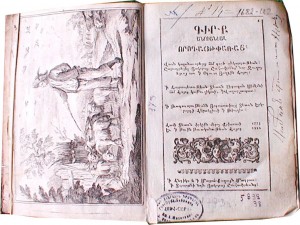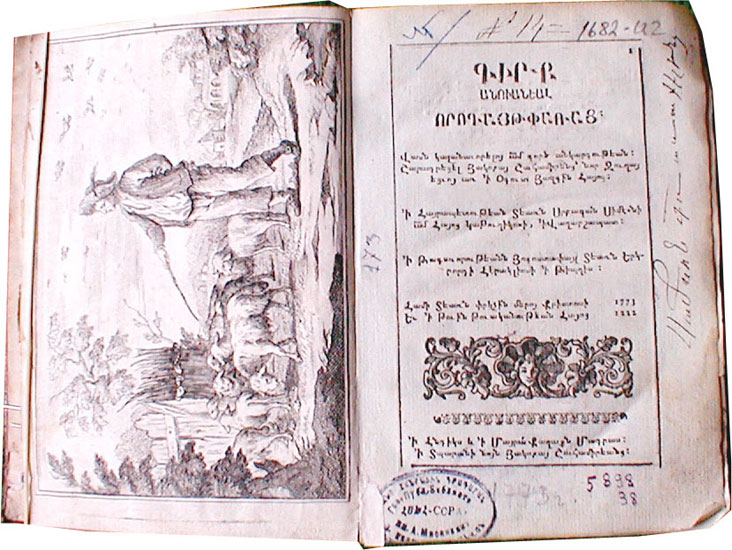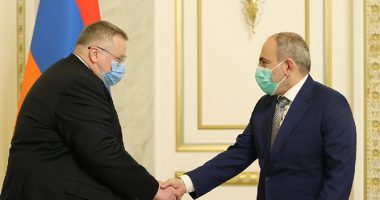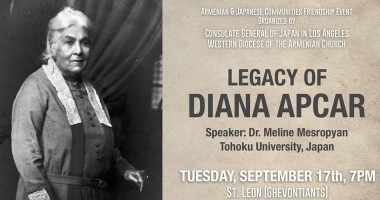

While visiting the Kingdom of Belgium in early March of this year, President Sarkisian of the Republic in Eastern Armenia, conveyed a false message that Western Armenia, including Istanbul, had ratified Vorogait Paratz in the 1860s of the Ottoman era. This action had allegedly upset the Sultan at that time, and subsequently led to the genocides of the christians, and the progressive minorities in Turkey. That is not the case at all- the 1860s’ constitutional efforts had nothing to do with Vorogait Paratz of the Enlightenment era. Rafael Hampatsoomian, the historian from the Armenian National Academy in Yerevan, describes this gaffe to be a “dishonorable error” of the President (quoted in armenian below).
In reality, after publication in 1773, Vorogait Paratz was initially banned, at that time by the Armenian church of Etchmiadzin to start with, and remained so even after subsequent printing and widespread distribution during the 1780s. This was primarily because of the continuing pogroms and persecution of the minorities in Ottoman Turkey. The persecutions culminated in the Genocide of the Armenians by the Ottomans beginning on the night of April 24, 1915. The 1773 Constitution resurfaced only recently when brought to light through the global efforts of the Madras Group Parliamentary Assembly. The following commentary is by Ms. Kohar Hampartsoomian.
Commentary about the continuing relevance of the 1773 Constitution:
In 1773, in Madras, India, Hakob Shahamirian (1745-74) completed with the assistance of his father a Constitution in classic Armenian (grabar) entitled “Vorogait Paratz” – a trap for those striving for glory. The Constitution was firstly applied for the Armenian community in Madras, at least since 1783. The greatest part of the 521 Articles comprising the first Armenian Constitution is up-to-date. Some of them amaze with their actuality and modernity. Hakob Shahamirian touches upon concepts like freedom of man and nations, the power of the law, substantiation of democratic decentralized form of government, etc. Pursuant to “Vorogait Paratz”, Armenia is a republic ruled by the parliament; all citizens irrespective of origin, status, gender and creed are equal before the law (Article 3). The power of law alone shall rule the country. The Court is independent and stable, and the institution of the jury shall be operational (Articles 504 – 507). The three branches of power shall not be separated but be equal in power. All higher officials and Judges shall be elected. The state shall allocate benefits for the disabled, musicians and scientists. Freedom of creed (Article 5), “speech, thought and activity” shall be ensured (Article 500). Aliens shall be entitled the right to political asylum (Articles 326-327). Shahamirian’s Constitution grants the freedom and the right to freely cross the border of the country (Article 347). Everybody has the right “to commit good or evil” (Article 394). The prisoners’ rights are guaranteed (Article 148), the traffic rules are stated; streets shall have names and numbers. All the ministries provided by the Armenian Constitution exist currently in most states of the world: (ministries of justice, economy, defense, national security, social security, and tax inspection). . .
a. Modern concepts of constitutional rights begins with “Vorogait Paratz” whose author, Yakob Shahamirian, was one of the peaks of the 18th century world social and political thought. “Vorogait Paratz” was created 14 years prior to the declaration of the US Constitution which is regarded to be the first one in the world. It was partially enacted in the Armenian community of Madras in 1773.
b. “Vorogait Parats” encompasses the democratic structure of the Armenian Apostolic Church, established by St. Gregory the Illuminator, Catholicos of All Armenians (302-325 A. D.).
c. Shows through references to historical sources that this document originates from the millennia-of Armenian common law, is based on the legal monuments of the 5-18th centuries, and is enriched by the latest achievements of the world law (particularly English) of the time.
Rafael’s Description of President Sarkisian’s “Dishonorable Error”:
Որոգայթ փառաց.ի մասին ՀՀ նախագահը իրօքէ անպատուաբեր վրիպում է թոյլ տուել: Որոգայթ փառացը աշխարհի առաջին տպագիր սահմանադրութիւնն է:
Ռաֆայէլ Համբարձումեան
23 մարտի 2012 թ.
Conclusion:
Vorogait Paratz is the original Constitution of Armenia, which cannot be ignored or misplaced! Shame be on the President of the Republic of Armenia for failing to properly recognize and respect this sacred monument dedicated to the cause of liberty in the name of all peoples of the world.
Vatche’ Kaloustian
www.kaloustianlaw.org










